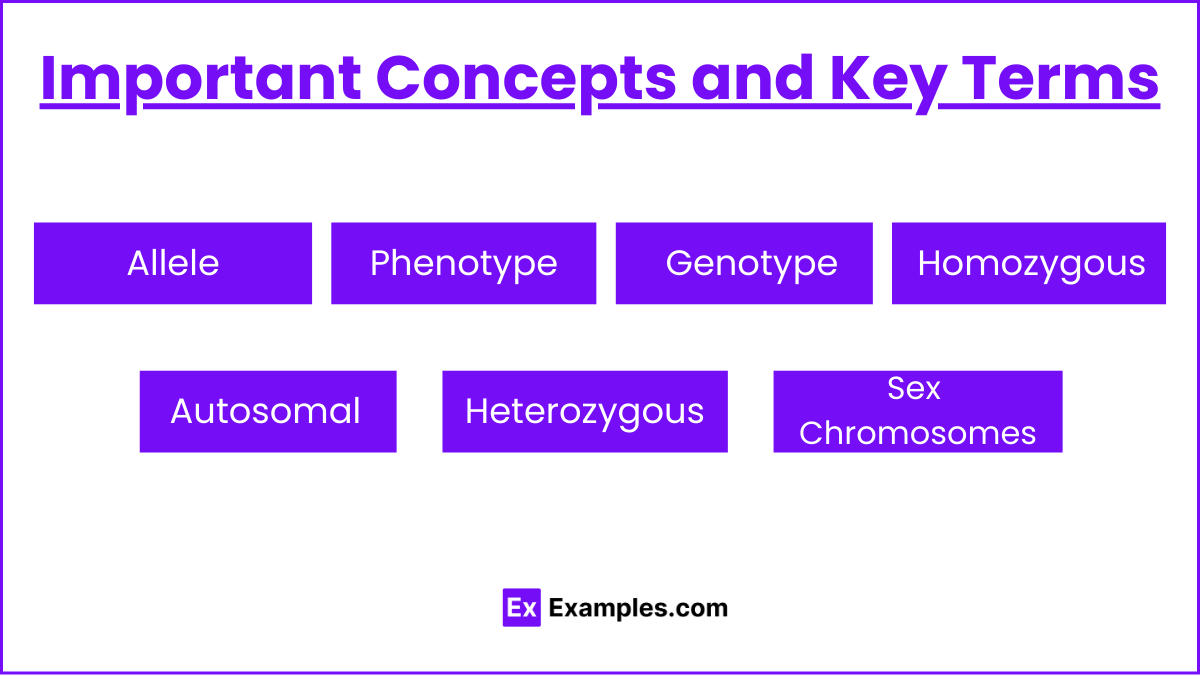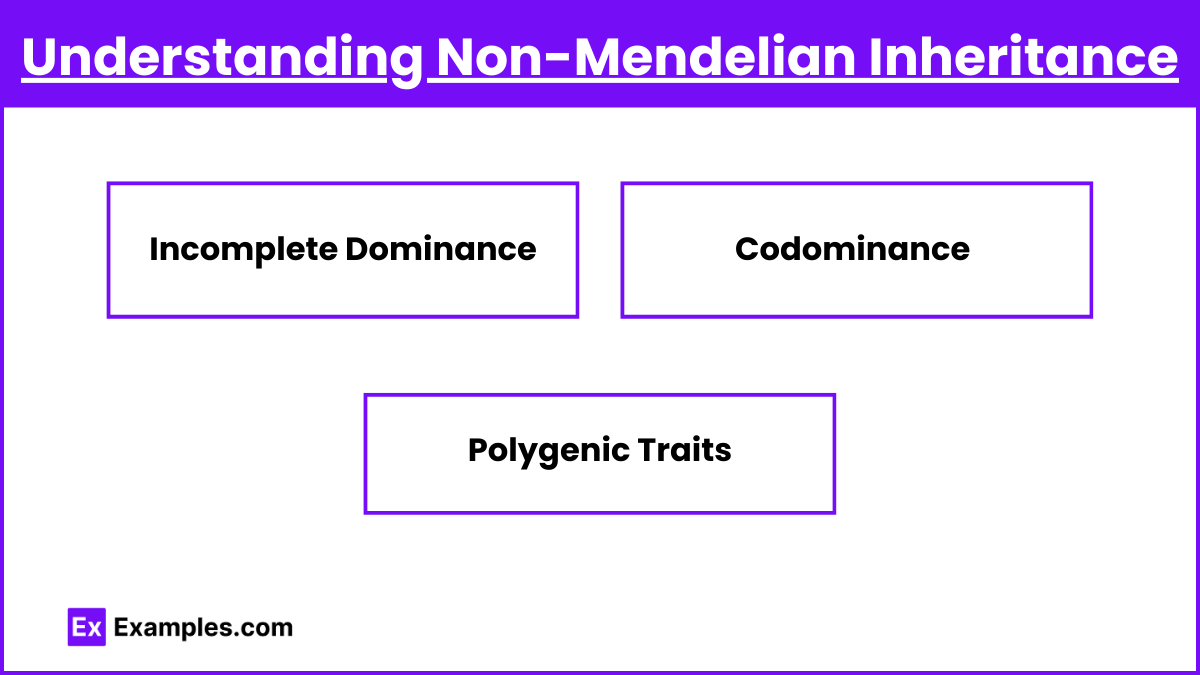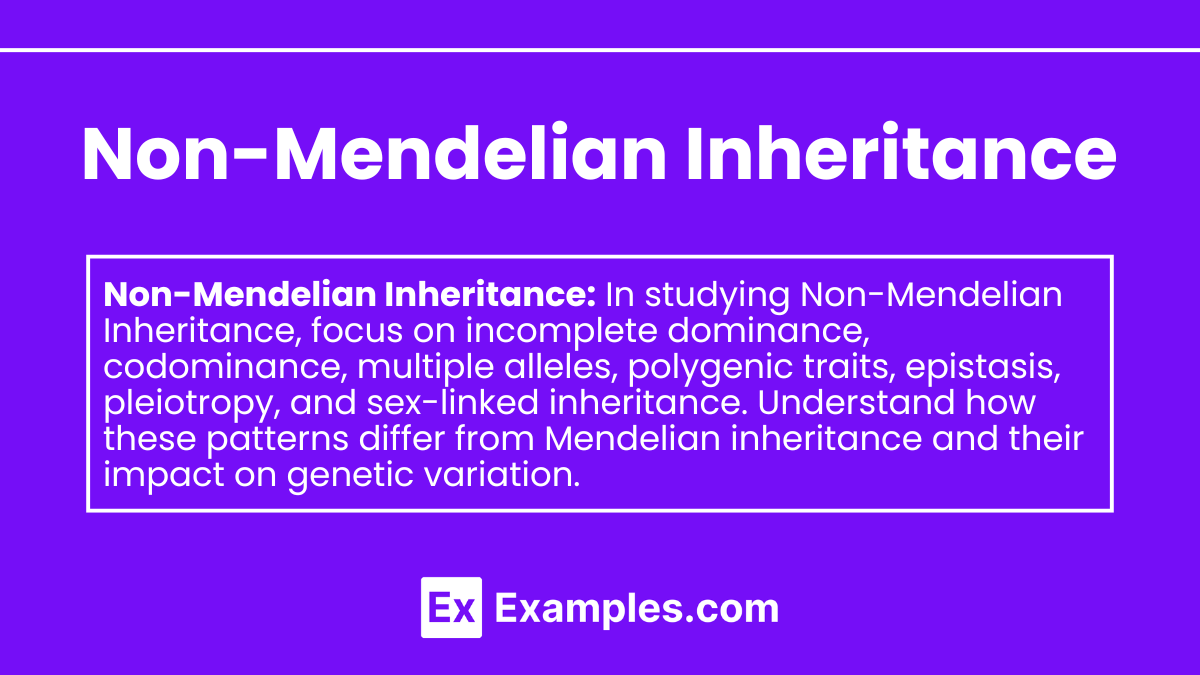Non-Mendelian inheritance, a critical topic in AP Biology, involves patterns where traits do not follow Mendel’s laws, affecting how genotypes are expressed. Within the nucleus, complex interactions of DNA and RNA influence these inheritance patterns. Examples include incomplete dominance, codominance, and polygenic traits, offering a broader understanding of genetic variation beyond Mendel’s principles. Understanding these mechanisms is essential for grasping the full complexity of genetics.
Learning Objectives
By studying Non-Mendelian inheritance, students will understand how chromosomes and DNA contribute to complex inheritance patterns during cell division and the cell cycle. They will learn to identify examples of incomplete dominance and other non-Mendelian patterns, recognizing how these mechanisms expand upon cell theory. Students will explore how genetic variation is achieved beyond classical Mendelian inheritance, gaining a deeper understanding of genetic diversity.
Overview of Non-Mendelian Inheritance
Non-Mendelian inheritance includes various mechanisms that do not follow the simple dominant-recessive relationship observed by Mendel. These mechanisms result in a greater diversity of phenotypes.
Types of Non-Mendelian Inheritance

Incomplete Dominance
- Definition: Incomplete dominance occurs when the heterozygous phenotype is an intermediate between the two homozygous phenotypes.
- Example: In snapdragon flowers, crossing a red-flowered plant (RR) with a white-flowered plant (rr) results in offspring with pink flowers (Rr).
Codominance
- Definition: Codominance occurs when both alleles in a heterozygous individual are fully expressed, resulting in a phenotype that shows both traits simultaneously.
- Example: In human blood types, individuals with the IAIB genotype express both A and B antigens, resulting in type AB blood.
Multiple Alleles
- Definition: More than two alleles exist for a particular gene, but an individual can only have two of these alleles.
- Example: The ABO blood group system in humans has three alleles (IA, IB, and i) that combine to produce four blood types (A, B, AB, and O).
Polygenic Traits
- Definition: Polygenic traits are controlled by two or more genes, resulting in continuous variation within the population.
- Example: Human skin color is influenced by multiple genes, leading to a wide range of skin tones.
Epistasis
- Definition: Epistasis occurs when one gene affects the expression of another gene.
- Example: In Labrador retrievers, coat color is determined by two genes, where one gene can mask the effect of another, resulting in different coat colors (black, brown, yellow).
Pleiotropy
- Definition: Pleiotropy occurs when one gene influences multiple, seemingly unrelated phenotypic traits.
- Example: The Marfan syndrome gene affects connective tissue, influencing traits such as height, limb length, and heart function.
Sex-Linked Inheritance
- Definition: Sex-linked inheritance involves genes located on sex chromosomes (X or Y), often showing different patterns of inheritance in males and females.
- Example: Hemophilia and color blindness are X-linked recessive disorders more common in males due to the presence of a single X chromosome.
Important Concepts and Key Terms

- Allele: Different forms of a gene.
- Phenotype: Observable characteristics of an organism.
- Genotype: Genetic makeup of an organism.
- Homozygous: Having two identical alleles for a particular gene.
- Heterozygous: Having two different alleles for a particular gene.
- Autosomal: Traits determined by genes located on non-sex chromosomes.
- Sex Chromosomes: Chromosomes (X and Y) that determine the sex of an individual.
Understanding Non-Mendelian Inheritance with Examples

Incomplete Dominance Example
- Cross: Red flower (RR) x White flower (rr)
- Offspring: All pink flowers (Rr)
Codominance Example
- Cross: Blood type A (IAIA or IAi) x Blood type B (IBIB or IBi)
- Offspring: Type AB (IAIB)
Polygenic Traits Example
- Trait: Human height
- Explanation: Multiple genes contribute to the height, resulting in a continuous range of phenotypes.


